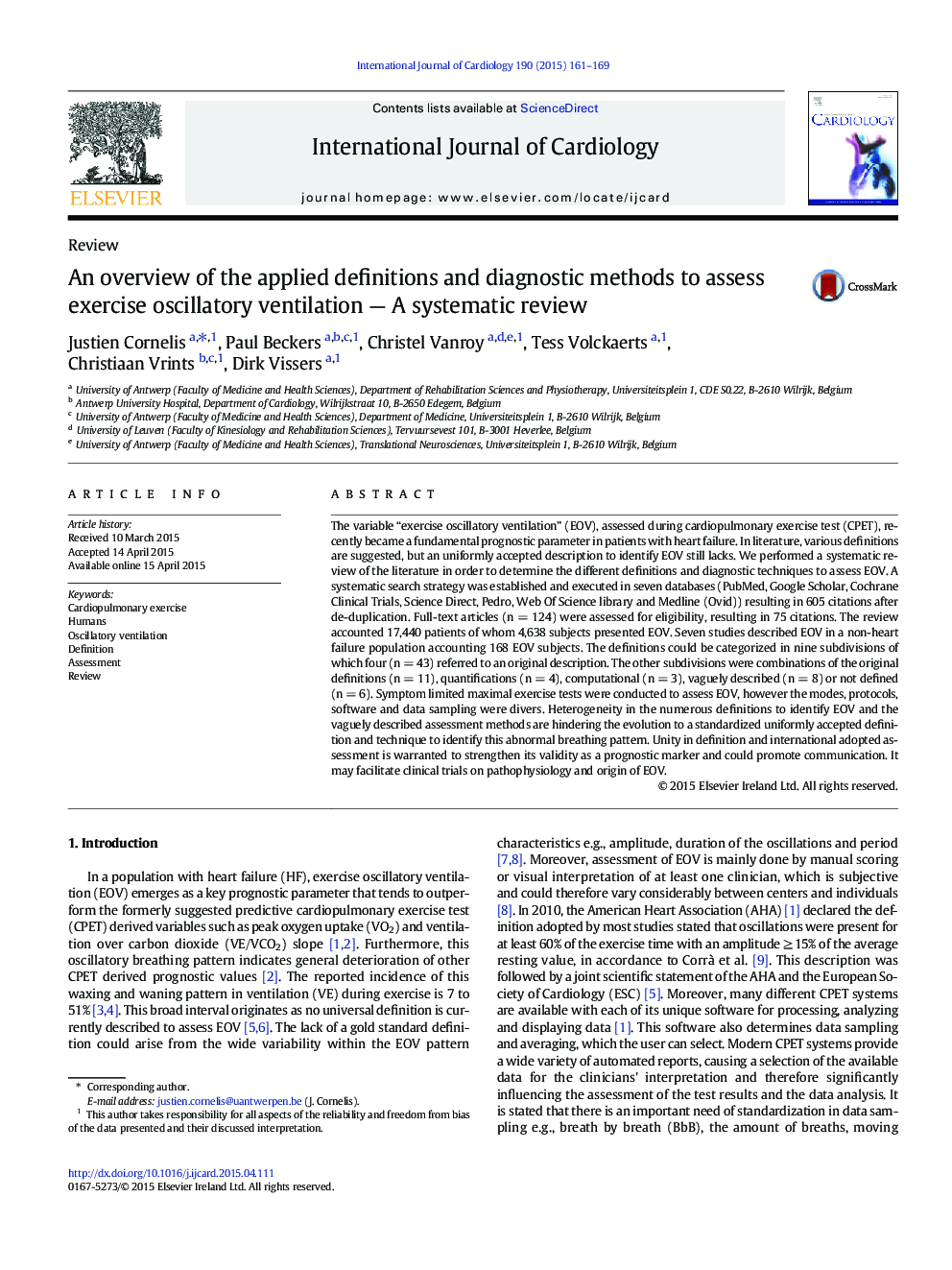| Article ID | Journal | Published Year | Pages | File Type |
|---|---|---|---|---|
| 5966557 | International Journal of Cardiology | 2015 | 9 Pages |
â¢We provide an overview of the suggested definitions and assessment methods for EOV.â¢We performed a systematic search including 75 citations, totalling 17,440 subjects.â¢The definitions for EOV could be categorized in nine subdivisions.â¢Various CPET protocols and data sampling techniques were applied.â¢Unity in definition and international adopted assessment is warranted.
The variable “exercise oscillatory ventilation” (EOV), assessed during cardiopulmonary exercise test (CPET), recently became a fundamental prognostic parameter in patients with heart failure. In literature, various definitions are suggested, but an uniformly accepted description to identify EOV still lacks. We performed a systematic review of the literature in order to determine the different definitions and diagnostic techniques to assess EOV. A systematic search strategy was established and executed in seven databases (PubMed, Google Scholar, Cochrane Clinical Trials, Science Direct, Pedro, Web Of Science library and Medline (Ovid)) resulting in 605 citations after de-duplication. Full-text articles (n = 124) were assessed for eligibility, resulting in 75 citations. The review accounted 17,440 patients of whom 4,638 subjects presented EOV. Seven studies described EOV in a non-heart failure population accounting 168 EOV subjects. The definitions could be categorized in nine subdivisions of which four (n = 43) referred to an original description. The other subdivisions were combinations of the original definitions (n = 11), quantifications (n = 4), computational (n = 3), vaguely described (n = 8) or not defined (n = 6). Symptom limited maximal exercise tests were conducted to assess EOV, however the modes, protocols, software and data sampling were divers. Heterogeneity in the numerous definitions to identify EOV and the vaguely described assessment methods are hindering the evolution to a standardized uniformly accepted definition and technique to identify this abnormal breathing pattern. Unity in definition and international adopted assessment is warranted to strengthen its validity as a prognostic marker and could promote communication. It may facilitate clinical trials on pathophysiology and origin of EOV.
